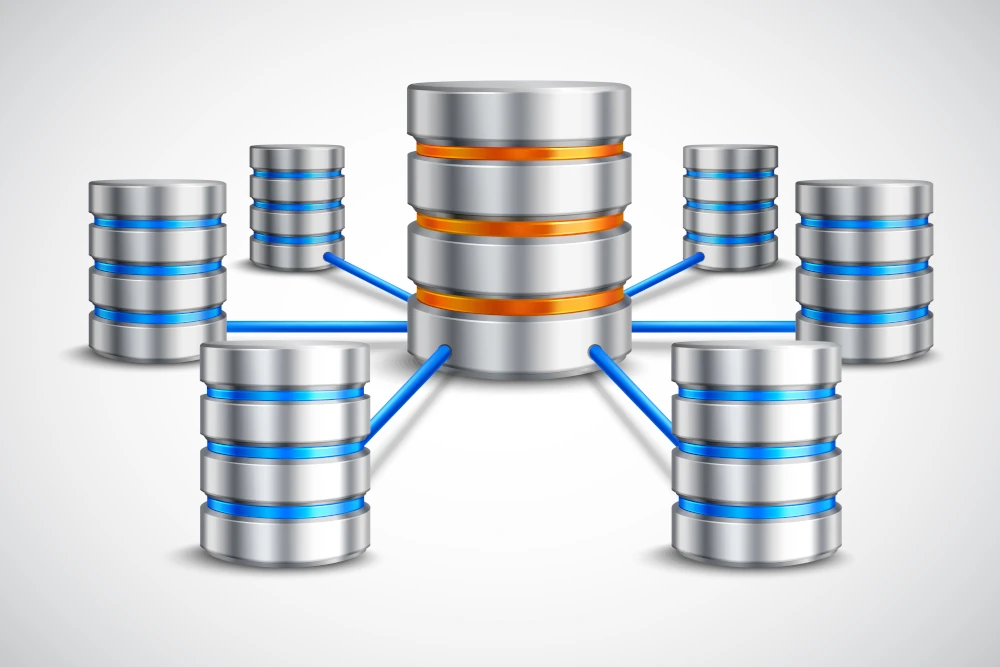Is your current managed backup and recovery solution meeting your business needs? In this blog post, we will discuss five clear signs that indicate it might be time to upgrade your managed backup and recovery solution. Recognizing these signs is crucial for ensuring the safety and accessibility of your data in the long run.
Recognizing Outdated Backup Solutions
Frequent Failures and Downtime
- Backup success rates
- System uptime
- Data recovery times
Lack of Scalability
- Slower backup performance
- Inability to support new devices or file formats
- Increased cost of storage per unit of data
Compatibility Issues
- Backup solution doesn’t support your devices or OS versions
- Poor performance when backing up specific applications
- Inability to handle specific file formats or sizes
Examining these three areas will help you determine whether your managed backup and recovery solution is outdated and in need of an upgrade. By staying up-to-date, you’ll ensure your data is protected and your business can continue to operate smoothly.
Evaluation of Data Growth Trends in Your Current Managed Backup and Recovery Solution
As data volumes continue to grow at an exponential rate, it’s essential for you to evaluate your current Managed Backup and Recovery Solution to ensure it keeps up with your business needs. In this section, we will discuss a few key factors that indicate when it might be time to consider upgrading your current solution.
- Calculate your data growth rate for the past few years.
- Compare it to your current solution’s capacity.
- Determine if your solution will be able to accommodate future growth.
Another factor to consider is the variety of data types your organization handles. With the proliferation of new data sources, such as IoT devices, social media, and mobile applications, it’s crucial for your backup and recovery solution to be able to handle diverse kinds of data. A modern backup solution should provide support for various data formats and platforms, minimizing the risk of data loss and ensuring smooth recovery processes.
- Backup window length (i.e. how long does the backup take to complete?)
- Recovery Time Objectives (RTOs)
- Recovery Point Objectives (RPOs)
- Seamless scalability without disrupting existing operations
- Pay-as-you-grow pricing models
- Easy integration with new technologies and platforms
Assessing Recovery Time Objectives (RTO) and Recovery Point Objectives (RPO)
When evaluating your managed backup and recovery solution, it’s important to examine your Recovery Time Objectives (RTO) and Recovery Point Objectives (RPO) to determine if an upgrade is necessary. These objectives are crucial because they help you understand your organization’s tolerance for data loss and downtime.
- Backup Frequency: How often are backups taken? Do they align with your organization’s needs?
- Data Loss Tolerance: How much data loss is acceptable to your business operations?
- Time Sensitivity: How critical is the data in question? Can your operations afford longer recovery periods?
| Metric | Target | Current Performance |
|---|---|---|
| RTO | 4 hours | 12 hours |
| RPO | 30 minutes | 2 hours |
If there’s a significant gap between your target and current performance, it may indicate a need to upgrade your managed backup and recovery solution. Balancing the trade-offs between RTO, RPO, and cost can help you optimize your backup strategy and ensure business continuity. Remember that your organization’s recovery objectives may change over time, so it’s important to periodically review and adjust these metrics as needed.
Understanding the Importance of Compliance and Security
Regulatory Compliance
As a business, you need to stay compliant with industry-specific regulations, such as HIPAA for healthcare, GDPR for data privacy, and PCI DSS for payment card information. Upgrading to a modern managed backup and recovery solution will ensure that your data and systems adhere to these regulations. Some benefits of maintaining regulatory compliance include:
- Avoiding stringent penalties and fines
- Gaining trust from clients and partners
- Reducing the risk of data breaches
Enhanced Security Features
- Encryption: Safeguarding data both at rest and in transit with advanced encryption algorithms.
- Secure Access Controls: Role-based access control (RBAC) and multi-factor authentication (MFA) to protect against unauthorized access.
- Intrusion Detection: Regular monitoring and detection of unusual or suspicious activity, with timely notifications and alerts.
- Vulnerability Management: Regular vulnerability assessments, threat analysis, and patch management to ensure timely security updates.

Exploring Advanced Managed Backup and Recovery Features
Real-Time Monitoring and Reporting
- Detect and address issues before they escalate
- Analyze the performance of your backup operations
- Respond quickly to changes in your environment
- Dashboard Insights: Visual representations of your backup performance, usage patterns, and more.
- Customizable Alerts: Notifications that inform you of potential issues or milestones.
- In-Depth Reporting: Detailed reports that dissect the efficiency and effectiveness of your backup and recovery operations.
Cloud-Based Recovery Options
As businesses increasingly embrace cloud technology, it’s crucial to have cloud-based recovery options. These benefits include:
- Geographical Redundancy: By storing your backups offsite, you safeguard against regional disasters or outages.
- Scalability: Cloud storage allows you to easily expand or reduce storage capacity based on your needs.
- Rapid Recovery: Cloud-based recovery can often be faster than traditional on-premises methods.
| Feature | Description |
|---|---|
| Data Encryption | Protects your data both in transit and at rest |
| Privacy Controls | Ensures your data is only accessed by authorized users |
| Compliance | Meets industry-specific regulations and certifications |
Automation and Integration Capabilities
- Reduced Manual Intervention: Automation reduces the need for manual tasks and human intervention.
- Improved Reliability: Automated processes are generally less prone to error than manual ones.
- Enhanced Productivity: Integrating with your existing software and tools simplifies the backup and recovery process.
- Scripting Languages: This allows your IT team to write custom scripts and automatically perform tasks.
- API Integrations: APIs enable your solution to seamlessly interact with other platforms and applications.
- Pre-Built Integrations: Your chosen solution should integrate with popular tools like virtualization and cloud platforms, operating systems, and databases.
By understanding these advanced backup and recovery features, you can better assess your current solution and determine if an upgrade is necessary.
Considering Total Cost of Ownership
-
Initial Investment: The upfront cost of the solution, including hardware, software, and implementation services. Compare initial investments of different solutions to better understand the financial implications.
-
Ongoing Maintenance: This includes costs such as staff salaries, regular system updates, data storage, and power consumption. Make a thorough analysis of these ongoing costs in relation to the value your current solution delivers.
-
Downtime Costs: Inefficient backup and recovery solutions can lead to prolonged downtime, resulting in financial losses and reputational damage. Calculate the potential impact of downtime on your organization and factor this into your decision.
| Cost Category | Current Solution | Potential Upgrade |
|---|---|---|
| Initial Investment | $15,000 | $25,000 |
| Ongoing Maintenance | $5,000 per year | $3,000 per year |
| Downtime Costs | $10,000 per year | $2,000 per year |
| Total Cost (5 years) | $95,000 | $75,000 |
Final Thoughts on Upgrading Your Managed Backup and Recovery Solution
Recognizing the signs that indicate the necessity of upgrading your managed backup and recovery solution is crucial for maintaining data security and operational efficiency. By addressing issues such as slow backup speeds, inadequate scalability, lack of automation, insufficient security measures, and outdated technology, businesses can proactively enhance their data protection strategies. Upgrading to a more advanced and reliable managed backup and recovery solution can mitigate potential risks and ensure seamless data management in the long run.
Frequently Asked Questions
How do I know when my current backup solution is no longer sufficient?
You might notice that your current backup solution is no longer sufficient if it takes too long to perform backups, if the recovery process is slow, or if you experience data loss. Check your system’s performance metrics and look for consistently increasing backup times or a high rate of backup failures. These are signs that it’s time to upgrade to a more advanced solution.
What indicators suggest that I need a more robust recovery strategy?
Some indicators that you need a more robust recovery strategy include frequent data loss incidents and a lack of flexibility in your current recovery plan, which may lead to operational disruptions during recovery efforts. Additionally, if you find yourself frequently falling short of data recovery objectives or experiencing lengthy downtimes due to recovery processes, it’s time to reconsider your strategy.
What are the core considerations for implementing the 3-2-1 backup rule effectively?
- Make sure you have at least three copies of your data: one primary copy and two backups.
- Ensure these backups are stored on at least two different types of storage media, such as disk and tape.
- Store one of the backups offsite to protect against disasters that could impact your primary location.
What advancements in backup technology should prompt an upgrade to my existing system?
- Speed and performance: Faster backup and recovery times help minimize downtime.
- Scalability: Enhanced solutions can accommodate growing data volumes without requiring frequent upgrades.
- Security: Newer technologies may provide better protection against data breaches and threats.
- Advanced features: Additional functionality, such as deduplication and snapshotting, can improve your backup efficiency and effectiveness.
How can I assess the reliability and efficiency of my managed backup solution?
- Backup success rate: High backup failure rates can indicate technological issues or insufficient capacity.
- Data recovery time objective (RTO) performance: Failure to meet RTO targets indicates that your solution may not be meeting your recovery needs.
- Storage efficiency: Monitor your backup data’s storage consumption to avoid exceeding capacity limits.
- Security: Evaluate your solution’s vulnerability to data breaches and incidents of unauthorized access.




